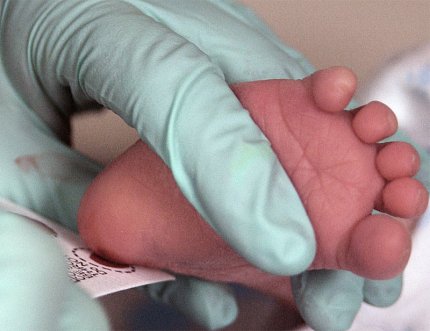Screening Newborns for Deadly Immune Disease Saves Lives

Photo: Eric T. Sheler/U.S. Air Force
Introducing widespread screening of newborns for a deadly disease called severe combined immunodeficiency (SCID), followed by early treatment boosted the five-year survival rate of children with the disorder from 73% before the advent of screening to 87% since, researchers report.
Among children whose disease was suspected because of newborn screening rather than illness or family history, 92.5% survived five years or more after treatment. These findings demonstrate for the first time that newborn screening facilitated the early identification of infants with SCID, leading to prompt treatment before life-threatening infections occurred and thereby increasing the proportion of children who survived to age 5 or beyond.
Researchers at NIAID and colleagues led the retrospective study, which The Lancet published June 20.
“This study definitively shows that population-wide newborn screening for SCID has made it possible to save the lives of many more children with the disorder than ever before,” said NIAID Acting Director Dr. Hugh Auchincloss. “We hope these findings will encourage more countries to screen newborns for this devastating disease.”
SCID is a rare disorder caused by mutations in genes involved in the development and function of infection-fighting immune cells. Infants with SCID appear healthy at birth but are highly susceptible to severe infections. The condition is fatal, usually within the first year or two of life, unless the infant receives an immune-restoring treatment such as a stem-cell transplant, gene therapy or enzyme therapy.
Forty to 80 babies in the United States and Canada are diagnosed with SCID annually. The number of babies born with the disorder globally is unknown because most countries do not yet screen for SCID. Incidence ranges from 1 infant per 2,000 live births in regions where inbreeding is common to 1 per 60,000 live births where it is not.
NIH scientists developed a newborn screening test for SCID in 2005. The test’s gradual adoption has made it possible to detect the disease in infants before symptoms appear, take steps to prevent infection and provide life-saving treatment early.
